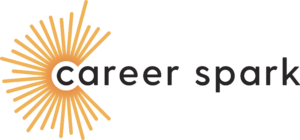How companies of all sizes can make the most of learning and development

Learning and development. You know how beneficial it can be for your organization, but when you’ve got a million other action items on your to-do list. For one, it can be tough to find the time to set up a program or for your employees to take time away from work to attend training sessions. And of course, whether you outsource the work or develop a program in-house, L&D work can be expensive.
Still, despite the potential drawbacks, learning and development programs offer many benefits to both your company and employees that make it a worthy investment. In this post, we’ll outline some of the key benefits of learning and development and how companies of all sizes can make the most of L&D.
Why You Should Invest in Learning and Development
You’ll future-proof your organization.
Brace yourself – the machines are coming. According to the October 2020 World Economic Forum report, the pandemic rapidly accelerated automation and economic uncertainty, which will lead to a greater shift of labor from humans to machines. These trends will lead to the displacement of 85 million jobs and create 97 million new positions by 2024. Investing in L&D will help you prepare for the shift by upskilling or reskilling your current workforce to meet your changing business needs.
Your employees (and candidates) want opportunities to learn.
Your employees want a lot more than a paycheck. According to a 2016 Gallup report, 87% of millennials say learning and development in the workplace is important, while 59% say having opportunities to learn and grow is extremely important when deciding whether to apply for a job.
Additionally, research from LinkedIn found that roughly a quarter of Gen Z and Millennials say learning is the number one thing that makes them happy at work. These two demographics already make up close to half (46%) of the workforce, so if you want to be competitive in the job market and attract the best talent, you need to show how you’re investing in their development.
You will keep more of your talent.
Let’s face it: losing talent is expensive. When you add up the soft costs (lost productivity, lost knowledge, errors, etc.) and the hard costs (recruiting, marketing, onboarding, temp workers, etc.), turnover can cost between a third to two times the employee’s annual salary, depending on the complexity of the position.
Fortunately, plenty of research shows a positive correlation between learning and development and employee retention. According to LinkedIn’s 2018 Workforce Learning Report, a whopping 93% of employees would stay at a company longer if it invested in their careers. In addition, a 2021 PayScale survey found that 2 of 3 employees list a lack of employee training and development as a significant contributing factor in deciding to quit. Lastly, over a quarter (27 percent) of Gen Z and Millennials say that a lack of opportunities to learn and grow would be the number one reason they’d leave their job.
It will help improve your bottom line.
Not only will you reap the rewards in terms of employee retention – learning, and development can also help you boost your profits. For example, a 2016 study from Gallup found that companies that implemented strengths-based management practices (e.g., having employees complete the CliftonStrengths assessment, incorporating strengths-based developmental coaching, positioning employees to do more of what they do best every day, etc.) experienced a 14%-29% increase in profit.
How to Make the Most of Learning and Development
So now that you have a pretty strong business case for learning and development, how exactly do you get started? Here are four different ways that you can use learning and development to optimize your organization.
- Address employee weaknesses
Nobody’s perfect, and we’re sure you have a couple of employees with weak spots that you’d like to strengthen. For example, maybe you recently promoted a solid independent contributor into a management role, and they need some leadership training. Or perhaps you hired a marketer whose writing could use some polish. Rather than replacing these employees (which, as you already know, can be costly), some training or coaching could be all they need to get up to par with their colleagues.
- Improve performance
On the flip side, maybe you already have a strong employee who you know has the potential to be even better. Learning and development could help take them from excellent to star performer. For example, maybe your design talent could learn new software that would help speed up their workflow. Or you could send your HR team to a conference to learn about new industry developments. If the training could help them do their work faster, better, or more efficiently, it’s probably worth it.
- Succession planning
When the time comes for your senior staff to leave your organization, will you be ready? Sometimes, you might know well in advance when a hard-to-replace team member will go, but this isn’t always the case. Succession planning will help prepare you for both scenarios. If you have internal candidates in mind for senior roles that need additional knowledge or skills before they’re ready to step up to the plate, you’ll want to start developing them sooner rather than later.
- Employee engagement
As mentioned above, your employees want development, so providing them with training, coaching, or mentorship can help them feel more engaged and excited about their work. The key is to make sure you’re providing them with training that aligns with their individual professional goals and the organization’s needs.
- Career development
Most employees, especially your younger talent, want to work somewhere they can grow. For some employees, growth might look like a traditional, vertical, ‘rise the ranks’ type of career path. For others, it could look like making lateral moves or becoming masters of their craft. Either way, learning and career development go hand in hand.
However, similar to employee engagement, you need to ensure that you approach career development training from both the employee and the organization’s perspectives. Ask yourself: What skills and knowledge do we require to achieve our business goals, and what are the skills and knowledge that are critical to your employee’s current and future career plans?
Learning and Development Should Start From Day One
When it comes down to it, impactful learning and development needs to address two key areas: your employee’s current role and their future aspirations, and your organization’s current needs and future aspirations.
Balancing all of these competing priorities can be challenging. Focus too much on the now, and it might be tough to meet future needs. Focus too much on the future, and your current business performance can suffer. Fortunately, our Career Spark solution can make this work much more manageable by empowering your employees to take charge of their careers.
Our platform can help them identify potential career directions, see how their unique skills and abilities impact the organization and equip them with custom development guides to help maximize their potential.
Learning and development doesn’t have to be overly time or resource-intensive. When you invest in a solution like Career Spark’s predictive people platform, we’ll do the heavy lifting for you so you can focus on what you do best: managing your team.













